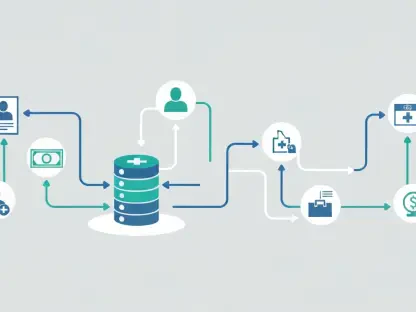Open-source software projects have become an integral part of the modern technological landscape, providing cost-effective solutions and encouraging innovation. However, they also come with a set of security challenges that are hard to ignore. The recent identification of CVE-2023-42282 in the “ip” project, a popular IP address parsing tool for JavaScript developers, has brought these concerns into sharp focus. This vulnerability has caused a stir within the community and led to the maintainer ceasing active updates, relegating the project to read-only status on GitHub.
The Burden of Security in Open-Source Projects
Resource Constraints and Security Vulnerabilities
Maintaining security in open-source projects is a daunting task, primarily due to the limited resources and manpower available. Often, these projects are overseen by a small group of unpaid volunteers who struggle to keep up with the constant wave of vulnerabilities. This scenario creates a precarious security landscape, increasingly challenging to navigate. Paul Nashawaty from the Futurum Group points out that not all Common Vulnerabilities and Exposures (CVEs) carry the same level of severity, and the conditions under which they can be exploited vary widely. This complicates the task of evaluating which vulnerabilities need immediate attention and which can wait.Additionally, the mere integration of various software components can sometimes yield unsafe behaviors, emphasizing the need to assess the entire system’s security, not just its individual components. The focus must shift from dealing with isolated vulnerabilities to understanding how they interact within the larger software ecosystem. This multi-faceted challenge underscores the necessity for companies and organizations to support open-source projects better, potentially by allocating additional developers to address specific vulnerabilities as they arise. Despite these efforts, the issue remains complex, requiring ongoing attention and substantial resources.
Mitigating Dependency Risks
One significant measure to combat these challenges involves organizations reassessing their software supply chains, specifically those that rely on open-source projects. There’s been a noticeable shift toward mitigating dependency risks on software that is no longer actively maintained. This involves scrutinizing the software components more meticulously before integrating them into critical systems. Companies are becoming increasingly cautious, aiming to ensure that they firmly understand the dependencies and implications involved.The evolving strategies within corporate environments reflect a more prudent and calculated approach to using open-source software. By adopting these strategies, organizations can better manage the risks associated with integrating open-source components. Implementing comprehensive security assessments, performing regular code reviews, and maintaining better documentation can significantly reduce dependency-related risks. These measures, while resource-intensive, are essential to fortify the technological infrastructure and ensure long-term security and stability.
Changing Attitudes and Practices in DevSecOps
Evolving DevSecOps Practices
The attitude within DevSecOps teams is also undergoing a transformative shift. The earlier casual practice of downloading code from any available source is becoming obsolete. With cybercriminals ready to exploit known vulnerabilities, it is crucial for these teams to find a balance between accessibility and operational security. This change in attitude reflects a broader understanding of the risks and the need for more stringent security measures, even for applications not directly exposed to internet threats.As a result, DevSecOps teams are elevating their security standards and proactively adopting measures to address potential vulnerabilities. This includes adopting various cybersecurity frameworks, increasing the frequency of security audits, and employing automated tools for vulnerability detection. By embracing these practices, teams can better anticipate and mitigate threats, ensuring a more robust and secure software development lifecycle. The ongoing shift toward proactive security measures is indicative of a deeper, more nuanced understanding of the need for holistic security strategies.
Heightened Vigilance and Proactive Measures
This trend towards heightened vigilance and proactive measures is becoming a critical aspect of modern DevSecOps practices. Ensuring system-wide security involves regular updates, extensive testing, and the active participation of all stakeholders in the development process. Teams are now more inclined to engage in continuous security monitoring and adopt a more systemic approach to risk assessment. The integration of real-time threat intelligence and active collaboration between developers, operations, and security teams is fundamental to building a resilient security framework.Moreover, the emphasis on continuous learning and adaptation is paramount. DevSecOps teams must stay abreast of the latest threat landscapes, evolving attack vectors, and emerging security technologies. In conclusion, the field of DevSecOps is moving towards a more integrated and comprehensive approach to security management. By deploying advanced security protocols and fostering a culture of continuous vigilance and learning, organizations can better navigate the complex and ever-evolving cybersecurity landscape.
A Way Forward for Open-Source Security
Collective Efforts and Resource Allocation
Securing open-source software projects demands a collective effort and a reallocation of resources. The intrinsic value these projects bring to technological innovation necessitates that they receive adequate support. There must be a concerted push towards providing the maintainers with the financial and human resources required to keep projects secure. This could involve organizations funding specific initiatives or contributing developers to assist with critical updates. Furthermore, fostering a community-driven approach can bolster open-source project security.
A Measured, Risk-Aware Adoption of Open-Source Software
Open-source software projects have become indispensable in today’s tech landscape, offering cost-effective solutions and fostering innovation. Despite these advantages, they also pose significant security challenges that can’t be overlooked. Recently, the spotlight has been on CVE-2023-42282, a critical vulnerability discovered in the “ip” project, a widely used IP address parsing tool for JavaScript developers. This security flaw has sparked concern within the community, highlighting the potential risks associated with open-source projects. In response to the vulnerability, the maintainer has opted to discontinue active updates, moving the project to read-only status on GitHub. This incident serves as a stark reminder of the ongoing security challenges in open-source software and underscores the need for heightened vigilance and better security practices. The open-source community must balance innovation with stringent security measures to ensure the reliability and safety of their projects.









